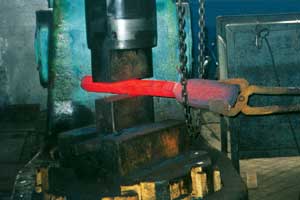Forging
Forging is the transformation of metals or alloys under pressure between two tools. Applications include forging of steel in hot forging temperatures from 950-1250°C (1742-2282°F), warm forging 750-950°C (1382-1752°F) and cold forging up to 150°C (302°F).
- At a Glance
- Featured Solutions
Application Need
Monitoring the metal temperature relative to it's recrystallization temperature is essential to ensure correct metallurgical properties are obtained. Infrared temperature when used in feedback will reduce the risk of damage to the processing equipment (including dies, rollers, presses or hammers) to eliminate expensive downtime and reduce maintenance costs.
Benefits to the customer
- Provide accurate temperature monitoring to avoid under or over heating of the metal, which may increase the risk of damage to the processing equipment
- Eliminate costly process downtime and significant servicing costs
- Identify parts that are overheated, which need to be rejected from the process production flow to guarantee finished product quality
- Monitor product temperature uniformity to minimize thermal gradients and eliminate risk of product cracking to reduce waste and increase productivity
Other featured products
Get more information about Fluke Process Instruments solutions for this application



